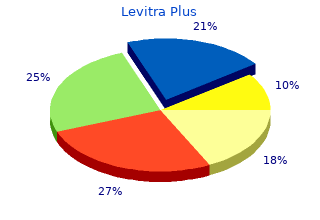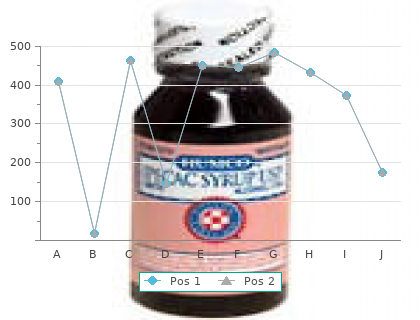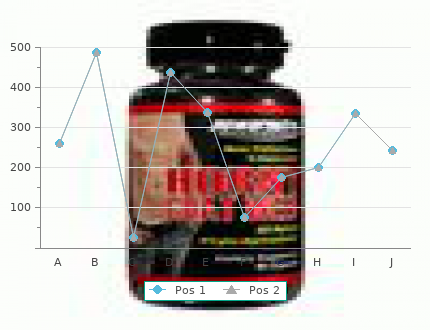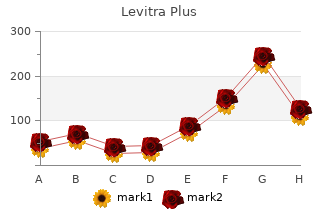Levitra Plus
By B. Ben. New School University.
A framework for by the ESSENCE on Health Research initiative best levitra plus 400mg erectile dysfunction pills cialis. But here it means the abili- vide enabling mechanisms to address needs and ties of individuals purchase levitra plus 400 mg with amex erectile dysfunction young age, institutions and networks, priorities within national strategies on research nationally and internationally, to undertake and for health. Te principles are as follows (5): disseminate research fndings of the highest qual- ■ Participation and alignment – a common ity (7). Te general principles have been framed efort of funders and local partners is 99 Research for universal health coverage Box 4. Setting priorities for research in Brazil Since 2000, the Brazilian government has made health research a national priority (44). Public resources have been used for fundamental and translational research (see definitions in Box 2. The fair allocation of research funds has been guided by six objec- tives, namely: (i) to improve population health, (ii) to overcome inequity and discrimination, (iii) to respect life and dignity, (iv) to ensure high ethical standards in research, (v) to respect methodological and philosophical plurality, and (vi) to ensure social inclusion, environmental protection and sustainability. Most funds were allocated to the “industrial health complex” (biotechnology, equipment and materials, health and technology service providers), to clinical research and to communicable diseases. Health technology assessment includes specifc research studies, systematic reviews and economic evaluations. Some 4000 research grants were awarded during this period, and around US$ 545 million were invested in health research across the country by 2010. The south-east region (including Rio de Janeiro and Sao Paulo) carried out 40% of all projects and received 60% of funds. The research has helped to improve treatments, prevention and diagnoses, to develop new products and services, and to strengthen the patient-oriented health-care system (44). AIDS, acquired immunodefciency syndrome; HIV, human immunodefciency virus; MDGs, Millennium Development Goals. The role of health ministries in developing research capacity: the examples of Guinea Bissau and Paraguay The Guinea Bissau health research system has evolved under the strong influence of international donors and technical partners who have provided funds and scientific expertise (51). Research has been carried out chiefly by the Bandim Health Project, the National Laboratory for Public Health, the Department of Epidemiology and the Instituto Nacional de Estudos e Pesquisa (INEP) which is oriented to the social sciences. Research priorities have been set largely by expatriate researchers and have focused on understanding and reducing child mortality. Recognizing the need to set national research priorities, align funding, build local research capacity and link research to decision-making, the Ministry of Health established the National Institute of Public Health (INASA) in 2010. External technical support is led by the West African Health Organisation (WAHO), which works in partnership with the Council on Health Research for Development (COHRED) and the International Development Research Centre (IDRC). The commitment of the Ministry of Health to invest in research has been central to success. The main challenges facing Guinea Bissau are the limited number of skilled researchers and dependence on foreign assistance. Paraguay has a stronger research base than Guinea Bissau, with more staff and institutions engaged in health research. In 2007, therefore, the Ministry of Health formed a new directorate for research and in 2009 set up an inter-institutional committee to create a framework for health research. The committee included the Minister of Education and representatives of UNICEF and the Pan American Health Organization. Drawing on the experience of other countries, and especially Mexico, the commit- tee drafted a government policy on research for health and set up the first National Council of Research for Health. As part of the drive to improve health research, all research institutions in the country are under evaluation. An online database of researchers has been created, and only registered researchers are eligible for funding from the Council of Science and Technology. The database provides information about the training of researchers, their experience, and current research topics. The intention is to manage dedicated funding through a health research trust and to allocate these funds transparently on merit. As in Guinea Bissau, the support of the Minister of Health backed by the President of Paraguay has been a key factor in the development of a national health research system. Examples of eforts to build research capacity, ranging from individual to global movements Supranational health research bodies National health research systems Organizational development Institutional development National health research councils Individual training WHO / TDR US NIH Wellcome Trust TDR, Special Programme for Research and Training in Tropical Diseases; US NIH, United States National Institutes for Health. Adapted, by permission of the publisher, from Lansang & Dennis (52).


Preliminary analyses indicated that the conditions for mediation analysis126 had been met: (1) the intervention had a significant effect on each of the five 12-month composite variables buy levitra plus 400 mg erectile dysfunction treatment herbal, namely knowledge [t(1217) = 15 purchase levitra plus 400mg mastercard erectile dysfunction treatments herbal. TABLE 47 Pearson correlation coefficients of the composite variables at 12 months Confidence and Family approval/behaviours Variable Knowledge motivation Peer norms and child attitudes Confidence and motivation 0. This issue may be freely reproduced for the purposes of private research and study and extracts (or indeed, the full report) may be included in professional journals 95 provided that suitable acknowledgement is made and the reproduction is not associated with any form of advertising. Applications for commercial reproduction should be addressed to: NIHR Journals Library, National Institute for Health Research, Evaluation, Trials and Studies Coordinating Centre, Alpha House, University of Southampton Science Park, Southampton SO16 7NS, UK. As the outcome variable negative food markers at 18 months as well as the negative food markers score at baseline revealed slightly elevated kurtosis (1. Our longitudinal path analysis contained data from three time points: (1) at baseline, including the demographic variables gender, baseline BMI SDS, school size and school-level deprivation, with direct paths to the outcome variable as well as the baseline scores of the outcome and demographic variables; (2) the 12-month mediating variables; and (3) the 18-month outcome data. The model shows that baseline composite variables predicted scores on these same variables at 12 months, which in turn predicted the outcome variable at 18 months. The intervention versus control variable also predicted the scores on the five composite variables at 12 months. Several of the composite variables were correlated at baseline (guided by modification indices of > 10). The error variances of the mediating variables at 12 months were correlated in an identical pattern to those pairs of mediating variables at baseline. Table 49 shows the goodness-of-fit indices for the two longitudinal path analysis models (with energy-dense snacks and negative food markers as outcome variables). Overall, the model fits were acceptable for both outcome variables, and although the CFI results were slightly below the 0. Path analysis for weekday energy-dense snacks (18 months) Figure 10 presents a diagram of the path analysis for energy-dense snacks. Not shown are the correlations of the variables at baseline, error covariances and non-significant regression weights (dashed lines). TABLE 48 Summary of Pearson correlation coefficient between the outcome variables energy-dense snacks and negative food makers with the mediating variables at 12 months Variable Energy-dense snacks Negative food markers Knowledge –0. TABLE 49 Goodness-of-fit indices for the longitudinal path analysis models with energy-dense snacks and negative food markers at 18 months as outcome variables Goodness-of-fit indices Energy-dense snacks Negative food markers Satorra–Bentler scaled χ2/df 4. B&S, behaviours and strategies; C&M, confidence and motivation; EDS, energy-dense snacks; FAB&CA, family approval/behaviours and child attitudes; NFM, negative food markers; PN, peer norms; SES, socioeconomic status. The following composite variables were significantly (p < 0. All paths shown in the diagram were significant (p < 0. The direct effect of the intervention on energy-dense snacks (18 months) was significant (p = 0. Of these three mediating variables, the effect of family approval/behaviours and child attitudes was the strongest, with a standardised regression weight of –0. This issue may be freely reproduced for the purposes of private research and study and extracts (or indeed, the full report) may be included in professional journals 97 provided that suitable acknowledgement is made and the reproduction is not associated with any form of advertising. Applications for commercial reproduction should be addressed to: NIHR Journals Library, National Institute for Health Research, Evaluation, Trials and Studies Coordinating Centre, Alpha House, University of Southampton Science Park, Southampton SO16 7NS, UK. PROCESS EVALUATION Path analysis for weekday negative food markers (18 months) Figure 11 shows the full mediation model with significant standardised regression weights of pathways for weekday negative food markers at 18 months. Not shown are the correlations of the variables at baseline, error covariances and non-significant regression weights (dashed lines). The results for negative food markers were generally similar, with the same variables correlated at baseline and at 12 months. Similar to the results for energy-dense snacks, there were no significant associations between gender and negative food markers (18 months), between school-level deprivation and negative food markers (18 months) and between peer norms and negative food markers (18 months). However, the association between behaviours and strategies and negative food markers (18 months) was significant (p < 0.


Decoding purchase 400mg levitra plus free shipping erectile dysfunction in young, reading discount 400 mg levitra plus fast delivery erectile dysfunction from diabetes, and reading dis- chiatry 1963;120:458–464. Preventing read- mine on children: studies on subjects with learning disabilities ing failure in young children with phonological processing dis- and school behavior problems. Arch Gen Psychiatry 1967;17: abilities: group and individual responses to instruction. Effects of reading compre- idate on paired-associate learning and porteous maze perfor- hension interventions for students with learning disabilities. Dextroampheta- hension: a synthesis of research in learning disabilities. In: mine sulfate in children with learning disorders: effects on per- Scruggs TE, Mastropieri MA, eds. Advances in learning and ception, learning, and achievement. Arch Gen Psychiatry 1969; behavioral disabilities, vol 10. Seattle: Special for learning disabled students: a review of the research. Psychotropic drugs and learning problem: a selec- 50. Review of stimulant drugs in learning and behav- for curriculum. Methylphenidate in matical word problems for students with learning disabilities: hyperactive children: differential effects of dose on academic, a meta-analysis. Psychostimulant effects on learning education classrooms. Writing and self-regulation: with attention deficit hyperactivity disorder. Clin Psychol Rev cases from the self-regulated strategy development model. Psychostimulant effects on learning ers: From teaching to self-reflective practice. New York: Guilford, and cognitive function: findings and implications for children 1998:20–41. Strategy instruction in planning: teaching students 1995;15:1–32. Treatment of hand- of methylphenidate on the cognitive, learning and academic writing problems in beginning writers: from handwriting to performance of children with attention deficit disorder in the composition. Composing via dictation and speech recognition sys- 27:191–211. Teaching students with learning and behavior nual Meeting of the International Neuropsychological Society problems. Dextroam- tools for students with learning disabilities: a comparison of phetamine: its cognitive and behavioral effects in normal and strategies to increase text entry speed. Learn Disabil Res Pract hyperactive boys and normal men. Curriculum-based measurement: the emerging alter- 81. Combining performance assessment and amine: suggestions for attention deficit-hyperactivity disorder. Monitoring basic skills progress sional complexity of multi-channel EEG indicates change of [Computer programs]. Nootropic drugs have different effects (DYX3) for dyslexia is located on chromosome 2. J Med Genet on kindling-induced learning deficits in rats. Behavior on chromosome 6p influences different aspects of develop- disorders in rats exposed to intrauterine hypoxia, and their cor- mental dyslexia. Reading disability: evidence for a genetic Med 1993;115:43–45.
Levitra Plus
8 of 10 - Review by B. Ben
Votes: 200 votes
Total customer reviews: 200 |



